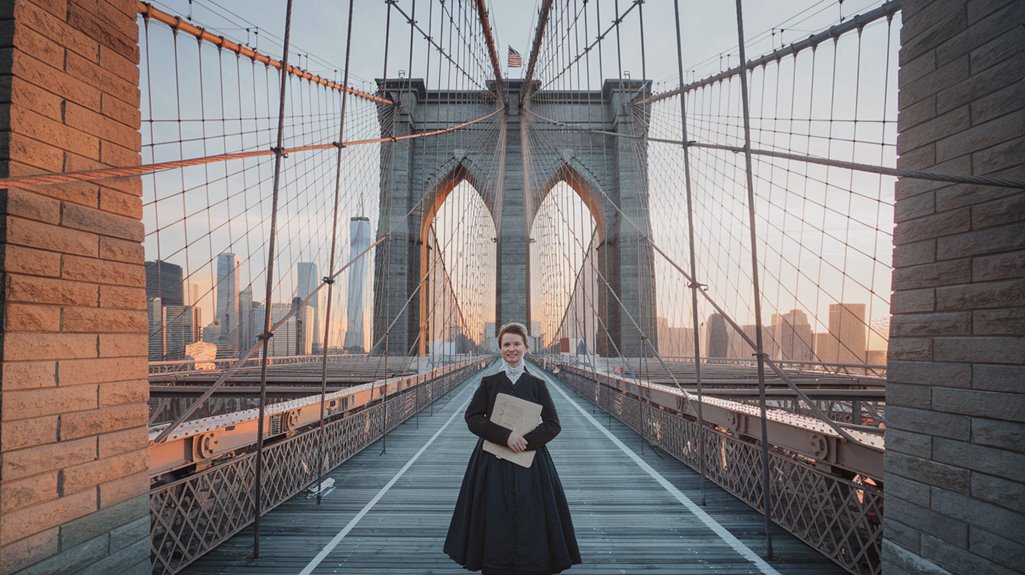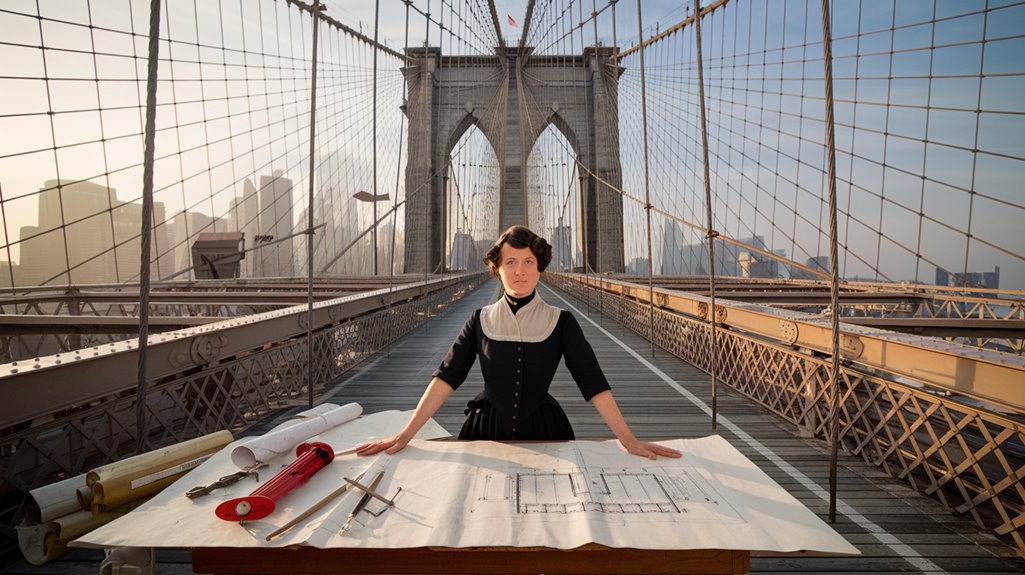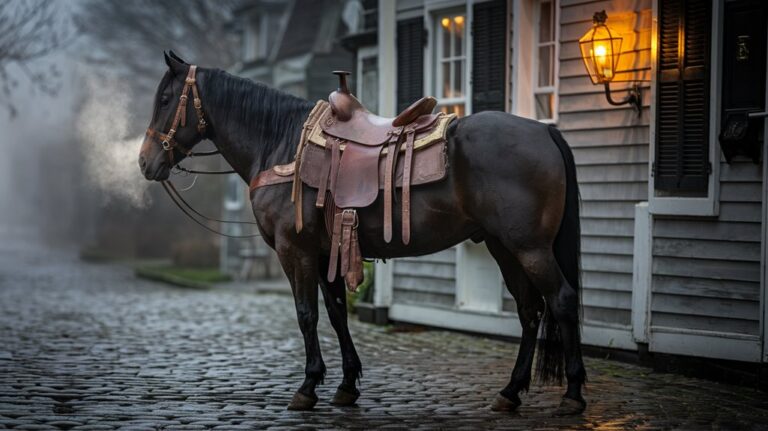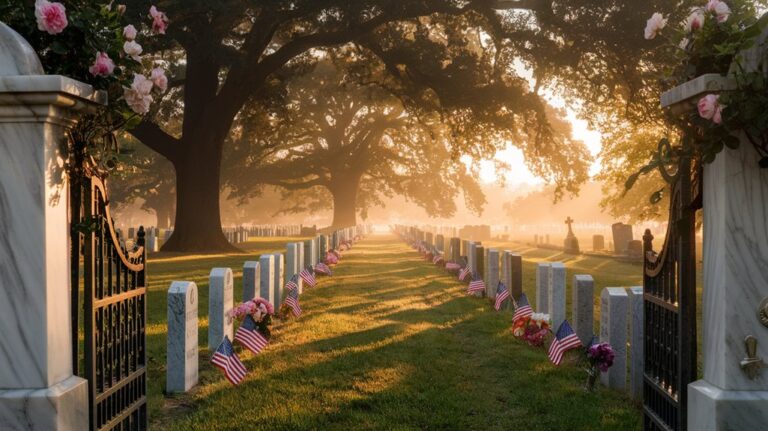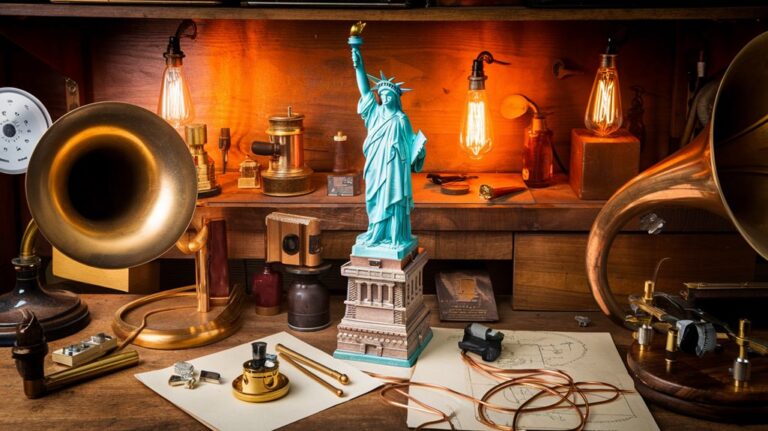A Woman Led the Construction of the Brooklyn Bridge
You might think you know the story of the Brooklyn Bridge, but there's a remarkable twist that history often overlooks. While John Roebling designed this iconic structure and his son Washington initially led its construction, it was actually a woman who guided the project to completion. Emily Roebling stepped into a role that no one expected her to fill, and she didn't just manage—she excelled. Her story challenges everything you've assumed about 19th-century engineering and leadership.
The Brooklyn Bridge: An Engineering Marvel Begins
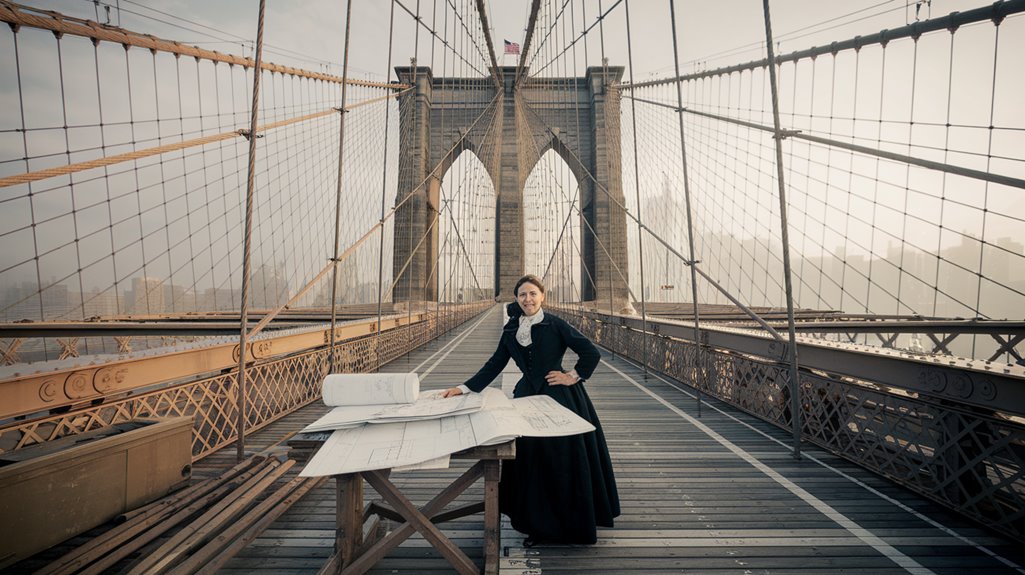
A tribute to human ingenuity, the Brooklyn Bridge began as an ambitious vision to connect Manhattan and Brooklyn across the East River.
When you examine the bridge design, you'll find John A. Roebling's innovative hybrid cable-stayed/suspension system spanning 1,595.5 feet. The structure showcases groundbreaking construction techniques, including four main cables containing over 5,000 galvanized steel wires each. The construction required skilled cable-spinners who coordinated workers while balanced on swaying catwalks.
You can see how the project faced numerous challenges during its 14-year construction period. Workers battled decompression sickness, a fire in the Brooklyn caisson, and controversies over material quality. When Washington Roebling became bedridden from decompression sickness, his wife Emily Warren Roebling stepped in to oversee the construction.
Despite these setbacks, the bridge introduced revolutionary elements like the first use of galvanized steel wire in cable construction and Bessemer steel for the superstructure, setting new standards for large-scale suspension bridges worldwide.
Emily Roebling's Unexpected Rise to Leadership
The Brooklyn Bridge's fate took an unexpected turn in 1869 when John A. Roebling died, leaving his son Washington in charge.
The leadership dynamics shifted dramatically again when Washington developed severe decompression sickness, becoming bedridden by 1872. This crisis could have derailed the entire project.
Enter Emily Roebling, who stepped into an essential project management role despite having no formal engineering education. Her strong academic background at Georgetown Academy gave her the foundational knowledge to tackle complex challenges. She became the first person to walk across the completed bridge, symbolizing her crucial role in its construction.
You'd be amazed to learn how she quickly mastered complex engineering concepts, from stress analysis to cable construction.
She didn't just relay messages between her husband and the workers – she negotiated with suppliers, approved contracts, and worked directly with field engineers to solve technical challenges.
Despite facing skepticism due to her gender, she effectively managed competing factions and kept the ambitious project on track.
Breaking Gender Barriers in 19th Century Engineering
While Emily Roebling's achievements on the Brooklyn Bridge proved remarkable, she wasn't alone in challenging 19th-century gender barriers in engineering. She overcame societal norms to lead one of history's most ambitious engineering projects.
You'll find that pioneering women engineers faced formidable obstacles, from limited educational access to outright professional exclusion. Despite these challenges, figures like Sarah Guppy and Henrietta Vansittart secured patents for their innovations, while Hertha Ayrton broke ground in electrical engineering. The 1911 census shockingly recorded no women listing their profession as engineer.
The fight for gender equality gained momentum when the Women's Engineering Society formed in 1919, coinciding with the Sex Disqualification Act that allowed women to join professional bodies.
You can trace this progress through trailblazers like Katherine Parsons, who managed female engineers during WWI, and Julia Morgan, one of the first women to graduate from UC's College of Engineering.
The Technical Challenges Behind the Bridge's Success
Building the Brooklyn Bridge demanded groundbreaking engineering solutions, much like the social barriers broken by pioneering women engineers of the era.
Four in four bridges in America failed between 1840-1880, making the Brooklyn Bridge's success even more remarkable. You'll find that foundation challenges pushed engineers to their limits, as they battled the East River's turbulent waters using innovative caisson chambers. Workers faced deadly conditions, with approximately 20 losing their lives during construction. The bridge construction was accelerated by steam-powered machinery that helped workers complete vital tasks.
The bridge's cable innovations proved revolutionary, incorporating steel wire for the first time in bridge construction thanks to new Bessemer technology.
Key technical milestones that shaped modern engineering:
- First use of pneumatic caissons for underwater foundation work
- Pioneering implementation of steel wire cables spanning 14,000 miles
- Introduction of open truss design for superior wind resistance
- Development of advanced cable stay systems for structural integrity
Emily's Lasting Impact on Architecture and Women's Rights
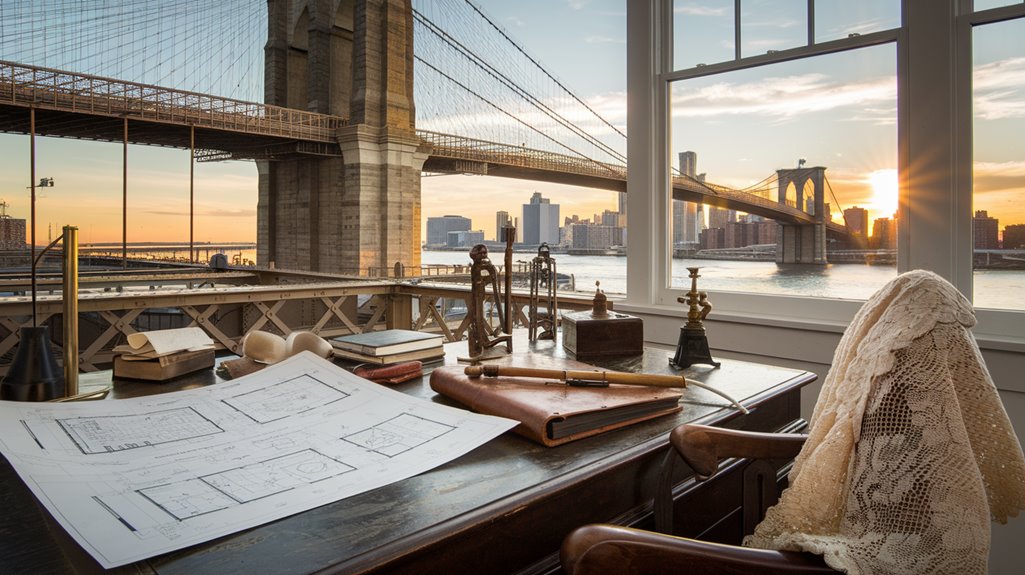
Determination and ingenuity marked Emily Roebling's profound impact on both engineering and women's rights. Her successful management of the Brooklyn Bridge project shattered glass ceilings and paved the way for women's empowerment in male-dominated fields.
Despite having no formal training, she mastered complex engineering principles to ensure the bridge's successful completion. You'll find her architectural legacy not just in the bridge's iconic spans, but in how she proved that technical expertise wasn't limited by gender. She diligently managed day-to-day construction while overseeing vital records and correspondence for the massive project.
After the bridge's completion, she didn't rest on her laurels. You can trace her continuing influence through her law studies at NYU and her passionate advocacy for women's causes.
Through her essays like "A Wife's Disabilities" and her work with organizations such as the Daughters of the American Revolution, she championed women's education and rights.
Her story continues to inspire generations of women in engineering and architecture.

